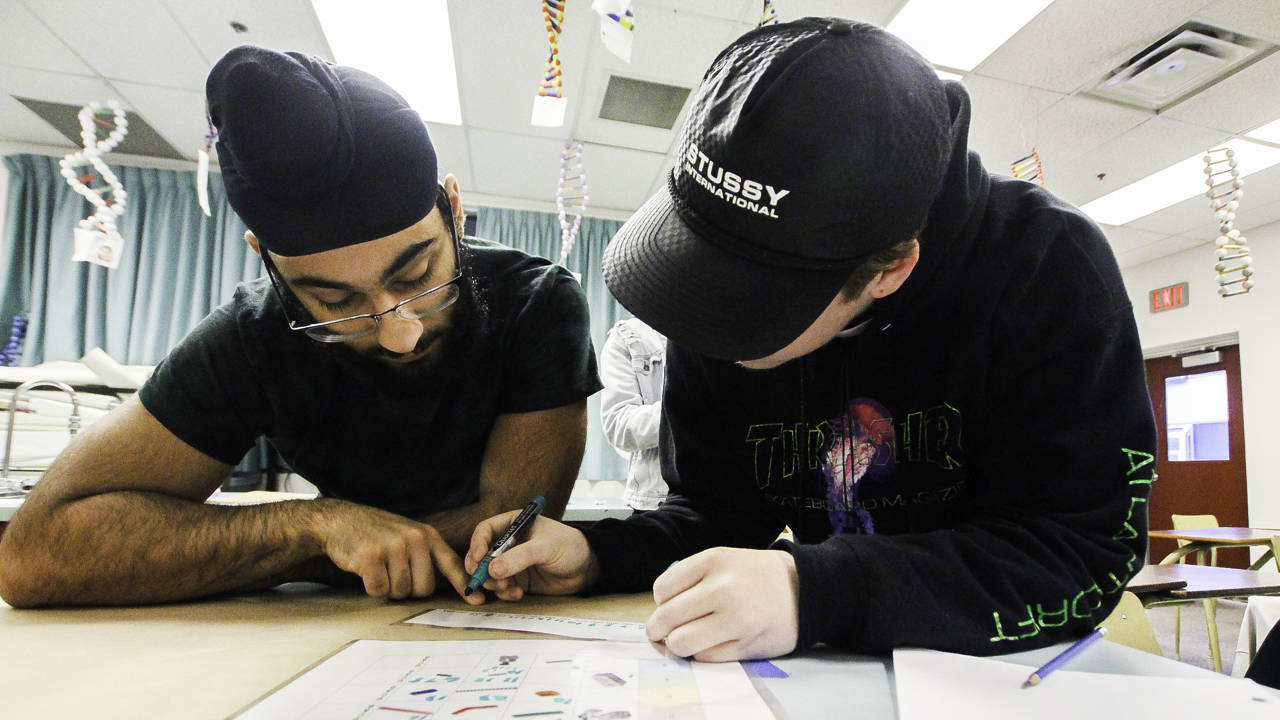Prince Rupert students have had the opportunity to build their scientific understanding block-by-block.
Genome BC, a non-profit organization that funds genome research and education, brought a learning program to School District 52 from Nov. 14 - 20 called Geneskool. Instructors visited Charles Hays Secondary School (CHSS) and Prince Rupert Middle School (PRMS) where they enhanced students’ understanding of biology concepts in a fun and interesting context.
READ MORE: Robots take over Roosevelt Elementary School for programming competition
Alex Chattwood and Eva Yap, two Genome BC instructors, led a CHSS morning science class through exercises where students used Lego blocks to learn about how DNA sequencing works to create different types of proteins.
“That’s just a little bit more fun than looking into a textbook and seeing how it all works,” said Chattwood. “And we all tie it back to biology with some discussions.”
Chattwood added that it is important for students to learn the basics of these concepts not only for their academic success, but also to be able to function in a world that is advancing rapidly from both a technological and scientific standpoint. Scientific illiteracy is something that students can no longer afford if they want to navigate modern society effectively and make the best, most well-informed decisions.
“So the big picture thing is that we go in and try to give them those concepts in a way that doesn’t turn them away from science and makes them think about going into scientific careers,” Chattwood said. “And if not going into scientific careers, making them aware that science isn’t a scary thing and that it can be enjoyed and understood by everyone.”
Aman Gill, a Grade 12 student at CHSS, was in the class that participated in the morning Geneskool session. He said that a lot of his classmates grew up playing with Lego and using it to make theoretical concepts more practical was enjoyable.
“A lot of people might not actually learn best in the classroom, but with this you can actually see work being done,” he said. “It makes it a lot easier for visual learners.”
READ MORE: Becomming binary literate
newsroom@thenorthernview.com
Like us on Facebook and follow us on Twitter
